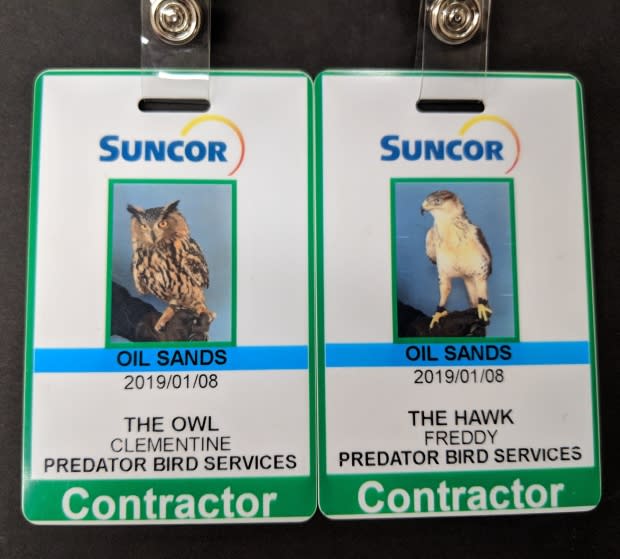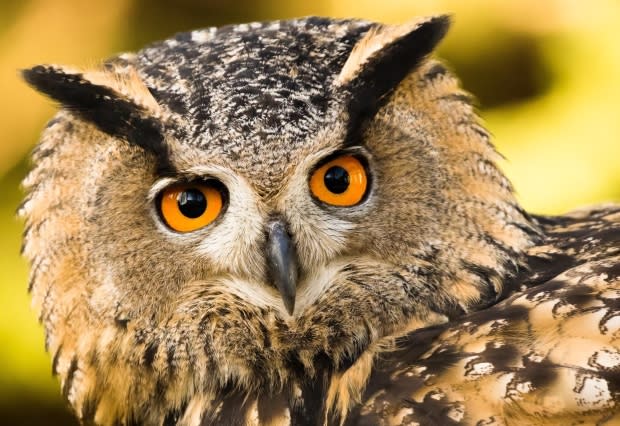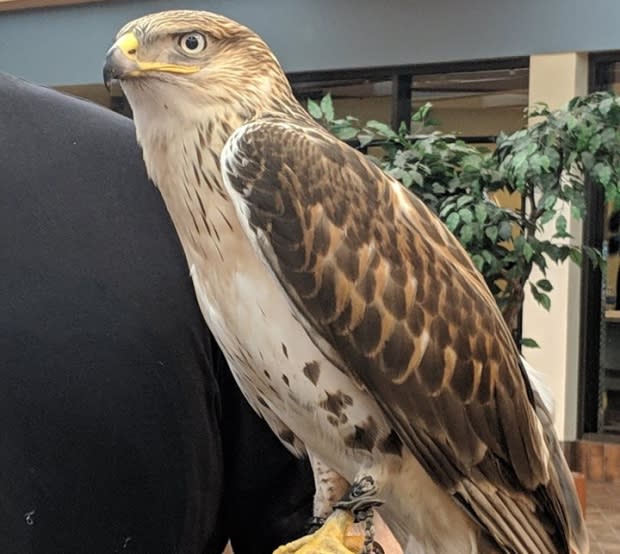Suncor taps winged thugs to scare off warmth-seeking ravens at oilsands plant
The Suncor Fort McMurray base plant had a raven problem. More than 700 would try and sleep overnight in the facility, which is several kilometres long.
They would poop and cough up pellets, undigested food, creating safety concerns and a big mess.
But two winged thugs, a hawk and owl, were the answer. Now they're getting soaring reviews for their raven-management program.
"We were asked to fix this problem in an environmentally-friendly way, not touch any of the ravens, and that's a challenge because our birds really want to catch them," Stephen Bucciarelli told The Homestretch.
He's with Predator Bird Services Inc., a company that says birds can be the solution to bird problems.
"That's the challenge," he said. "How do we make these ravens not want to be in this plant, where they are keeping warm all night."
Bucciarelli and his team tapped Freddy the hawk and an owl named Clementine for this project.

"Freddy is a ferruginous hawk. He's young and just a good-sized bird. He's got a huge wingspan. Ravens just don't like him one bit. They don't want to go to sleep when he's around so they just keep moving. He causes a big commotion," Bucciarelli said.
"Clementine is an Eurasian eagle-owl. She looks like a great horned owl. They eat ravens at night all the time. The only real difference is eye colour. Eagle-owls have bright orange eyes, that's how she got her name."
But wait. The company didn't want a raven massacre.

"We keep them on a very short hypothetical leash," Bucciarelli said of his hired flying goons.
The team kept the focus of the hawk and the owl on the team, not the ravens.
"We make sure they are not getting any ideas. By the end, neither of them had touched a single raven, which is great."
A sizable unkindness of the ravens, between 700 and 800 of them, got the idea on the fly. Half of them stopped coming back after the first week, Bucciarelli said.

"After that we had to keep going back every night. Just remind them, you can't sleep here, you can't sleep there. The plant is huge, it is several kilometres long.
We had to navigate through it to find all the locations where the birds were sleeping to move them out."
Suncor says the initial results look good.
"The bird management pilot is a great example of how we are committed to looking for unique solutions to issues at site," the company's maintenance coordinator Michelle Landsiedel wrote in a social media post.
"We're looking forward to seeing how we can leverage what we've learned and apply it in the future."
Bucciarelli's team had a 30-day permit with the province which is being reviewed before they can return, but he says the results were solid. By the end, roughly 30 ravens tried to return to the facility each night before being cleared out.
He adds Freddy and Clementine were more effective than some other methods the company tried, like blaring audio from speakers.
"They just see a bird that can harm them and they leave," Bucciarelli said.
With files from The Homestretch

